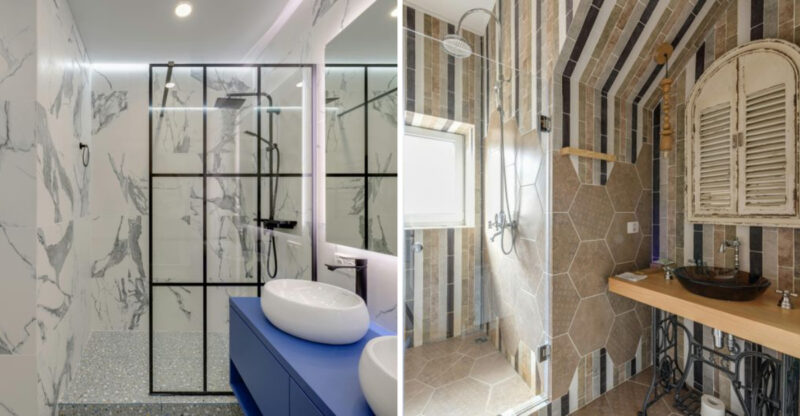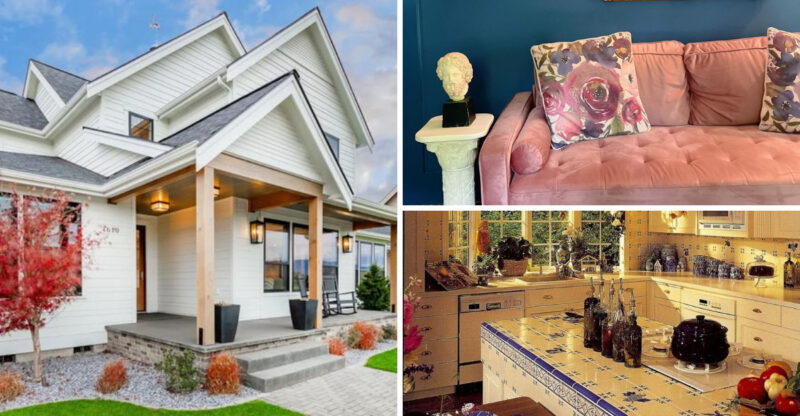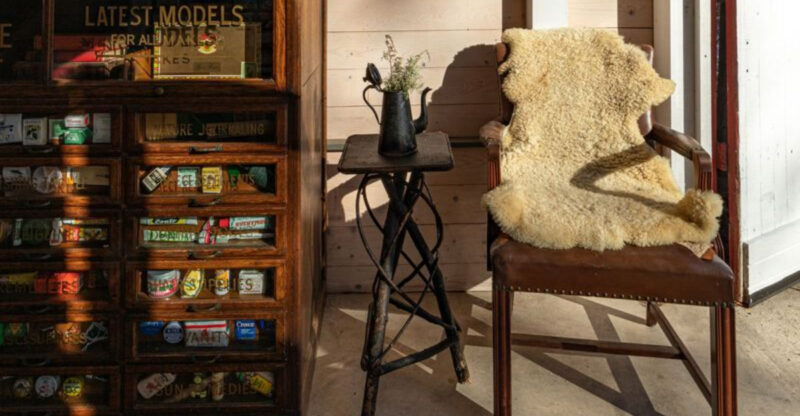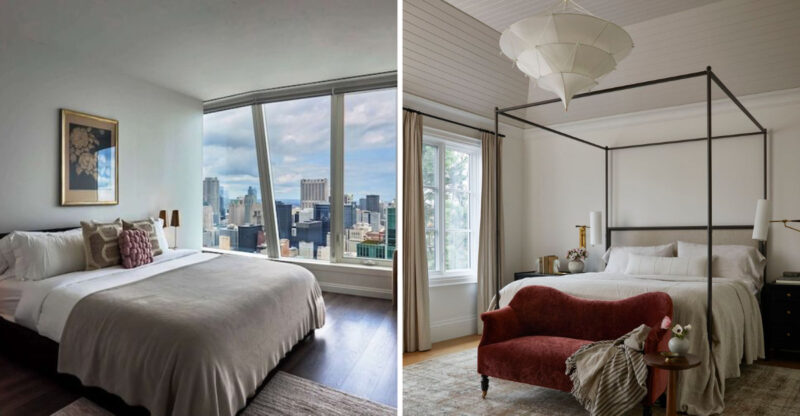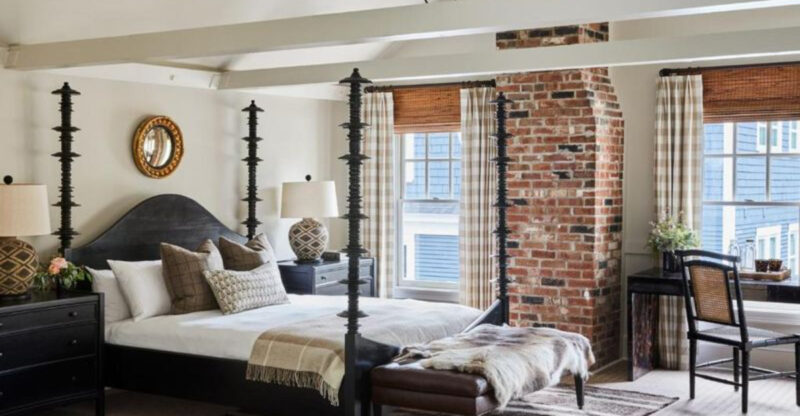Renovating In NYC Skip These 12 Outdated Kitchen Ideas And Try These 10 Timeless Ones Instead
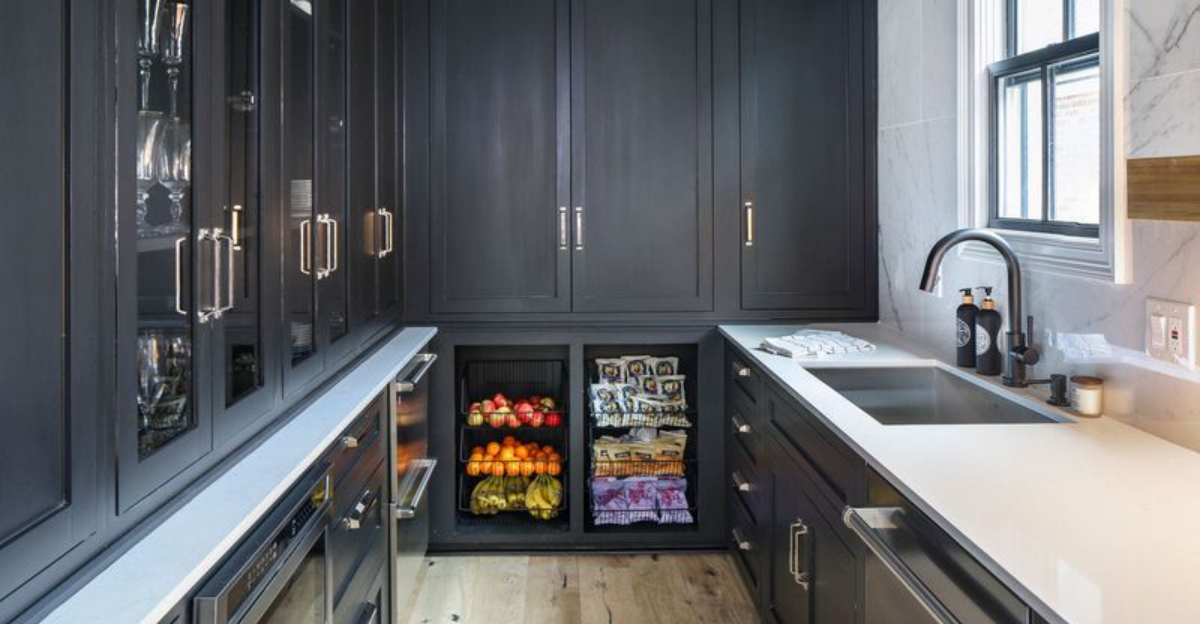
Renovating a kitchen in New York City presents unique challenges due to space constraints and high costs.
Making smart design choices can mean the difference between a dated space that needs another update in five years or a timeless kitchen that maintains its appeal for decades.
I’ve compiled a guide to help you navigate your NYC kitchen renovation by identifying which trends to avoid and which classic elements to embrace instead.
1. Dark Cherry Cabinets (skip)
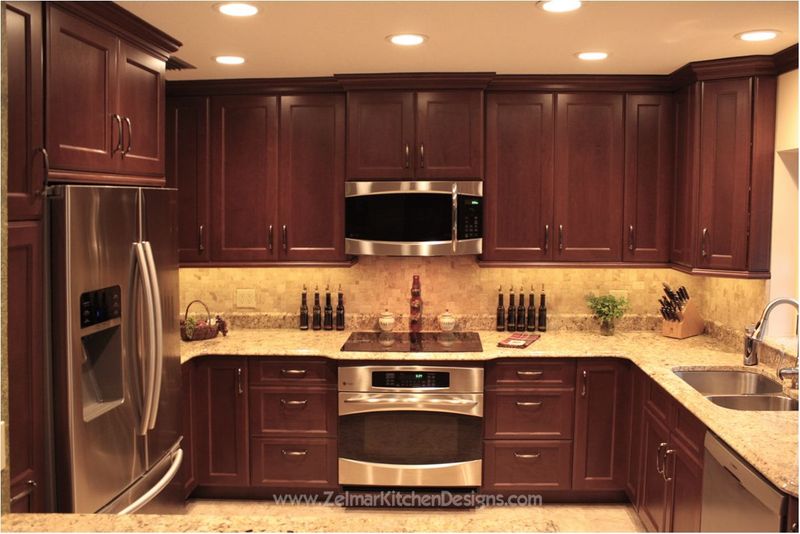
Once the hallmark of luxury kitchens, dark cherry cabinets have fallen out of favor in modern NYC apartments. Their heavy, imposing presence makes small New York kitchens feel even more cramped and gloomy.
Light struggles to bounce around these dark surfaces, which is particularly problematic in typical NYC apartments where natural light is already at a premium. The reddish undertones also tend to clash with contemporary color schemes and materials.
Manhattan designers now view these cabinets as an immediate renovation red flag, dating your space to the early 2000s. For resale value alone, it’s worth avoiding this dated look that screams for an expensive update.
2. Busy Granite Countertops (skip)
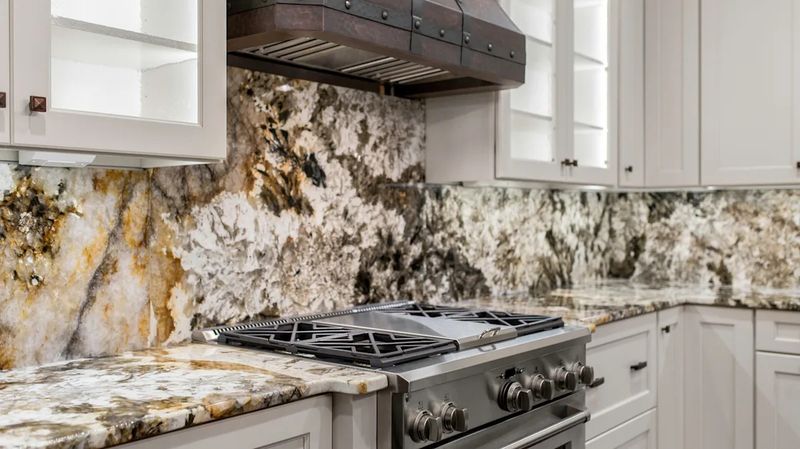
Speckled, multi-colored granite countertops once dominated NYC kitchens but now feel chaotic and overwhelming. Those brown-beige-black patterns with gold flecks create visual noise that competes with everything else in your compact Manhattan kitchen.
Maintenance issues compound the problem these porous surfaces require regular sealing to prevent staining and bacterial growth. In busy New York households, who has time for that extra maintenance?
Real estate agents report that dated granite patterns can actually decrease apartment values in competitive NYC markets. The busy patterns also limit design flexibility, making it difficult to update other elements without a complete countertop replacement.
3. Popcorn Ceilings (skip)
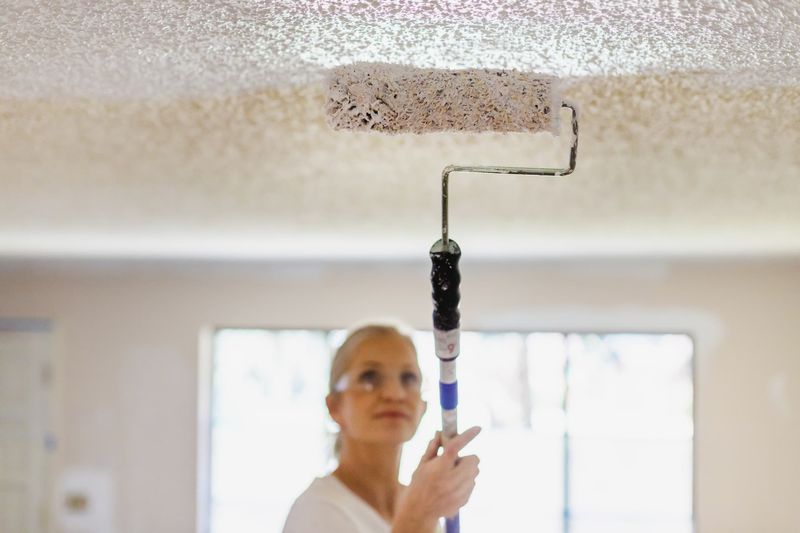
Finding popcorn ceilings in a NYC kitchen is like discovering a dinosaur fossil – fascinating but completely out of place in modern times. This textured nightmare not only collects grease, dust, and cooking residue but also makes your ceiling feel lower in already vertically-challenged city apartments.
Removal isn’t just about aesthetics many popcorn ceilings installed before 1980 contain asbestos, requiring professional remediation. That’s an additional expense most NYC renovators don’t anticipate.
The uneven surface creates harsh shadows and poor light reflection, working against the bright, open feeling most New Yorkers crave in their limited kitchen space. Smooth ceilings are now the only acceptable option for urban kitchen designs.
4. Fluorescent Tube Lighting (skip)
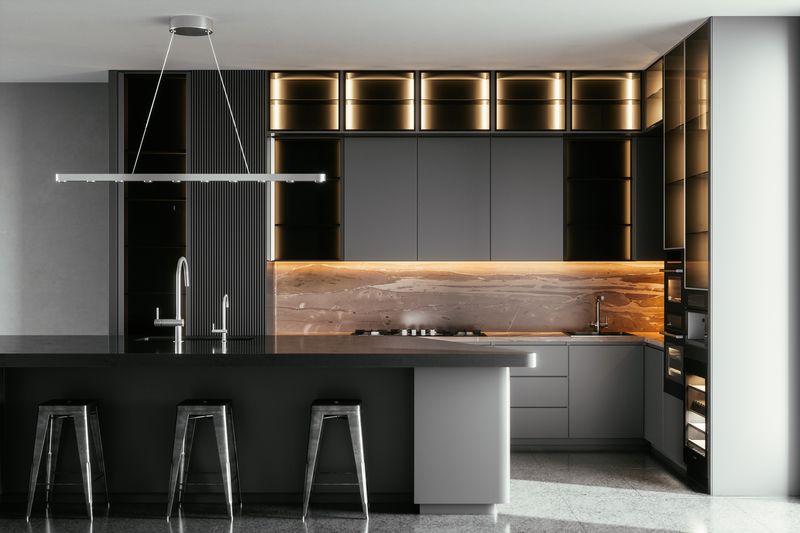
Harsh fluorescent tube fixtures cast that sickly institutional glow that makes everyone and everything look terrible. In NYC kitchens where presentation matters whether you’re hosting friends or taking food photos for Instagram this lighting is a disaster.
Beyond the unflattering light quality, these fixtures buzz annoyingly and flicker as they age. The bulky housing also takes up precious ceiling height in typical pre-war apartments with already low ceilings.
Energy efficiency arguments no longer justify these eyesores since modern LED options use even less electricity while providing superior light quality. The cold, clinical atmosphere created by fluorescent lighting contradicts the warm, inviting feeling most New Yorkers want in their kitchen spaces.
5. Overly Themed Décor (skip)
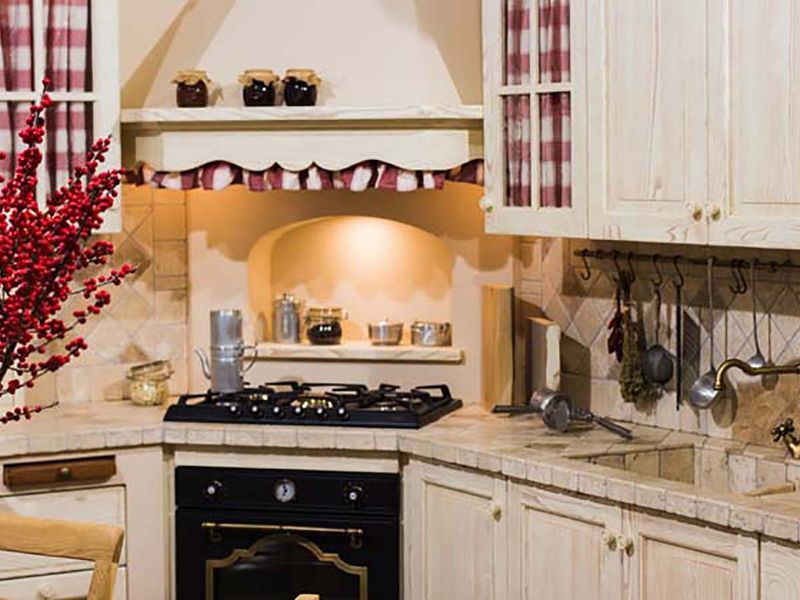
Tuscan vineyards, French country cottages, or nautical motifs have no business in your Brooklyn brownstone kitchen. These heavy-handed themes quickly become dated caricatures rather than timeless designs, making your kitchen feel like a themed restaurant rather than a home.
Storage is already precious in NYC kitchens, yet themed décor often involves countless dust-collecting accessories that waste valuable counter and cabinet space. The disconnect between these rural or coastal fantasies and actual urban living creates a jarring visual experience.
Resale considerations also matter potential buyers struggle to see past themed kitchens, often calculating renovation costs before making offers. Themed kitchens frequently photograph poorly in real estate listings, limiting your apartment’s online appeal in a market where digital first impressions are crucial.
6. Laminate Countertops (skip)
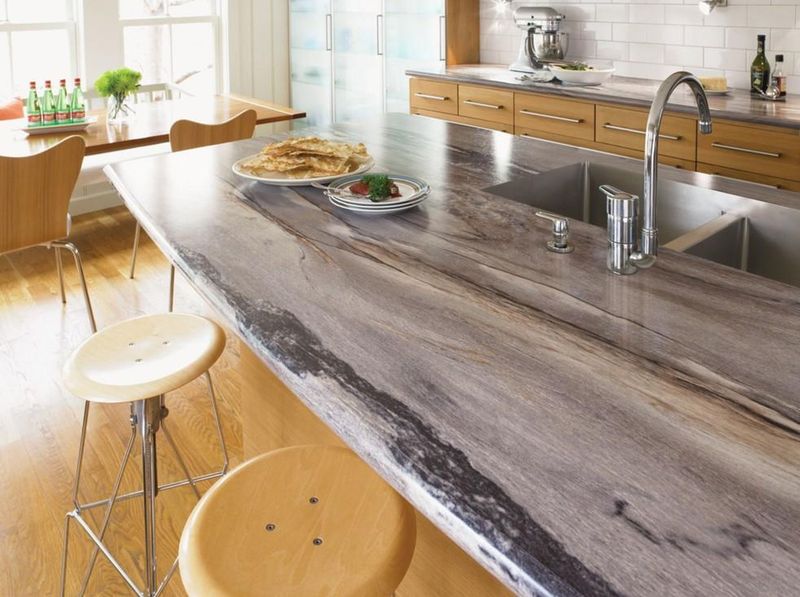
Budget-friendly laminate countertops might seem practical for cost-conscious NYC renovations, but they’re a false economy. The visible seams and plastic appearance immediately signal “cheap renovation” to visitors and potential buyers.
Durability issues become apparent quickly knife marks, heat damage, and water infiltration at the seams create permanent eyesores. Manhattan’s premium real estate market demands quality materials, and laminate simply doesn’t meet those expectations.
Many laminate patterns attempt to mimic natural materials but achieve an uncanny valley effect that fools no one. The disconnect between these faux-luxury surfaces and NYC’s sophisticated design standards creates a jarring effect that undermines your entire renovation investment. Even budget renovations should prioritize quality in high-impact areas like countertops.
7. Tiny Mosaic Tile Backsplashes (skip)
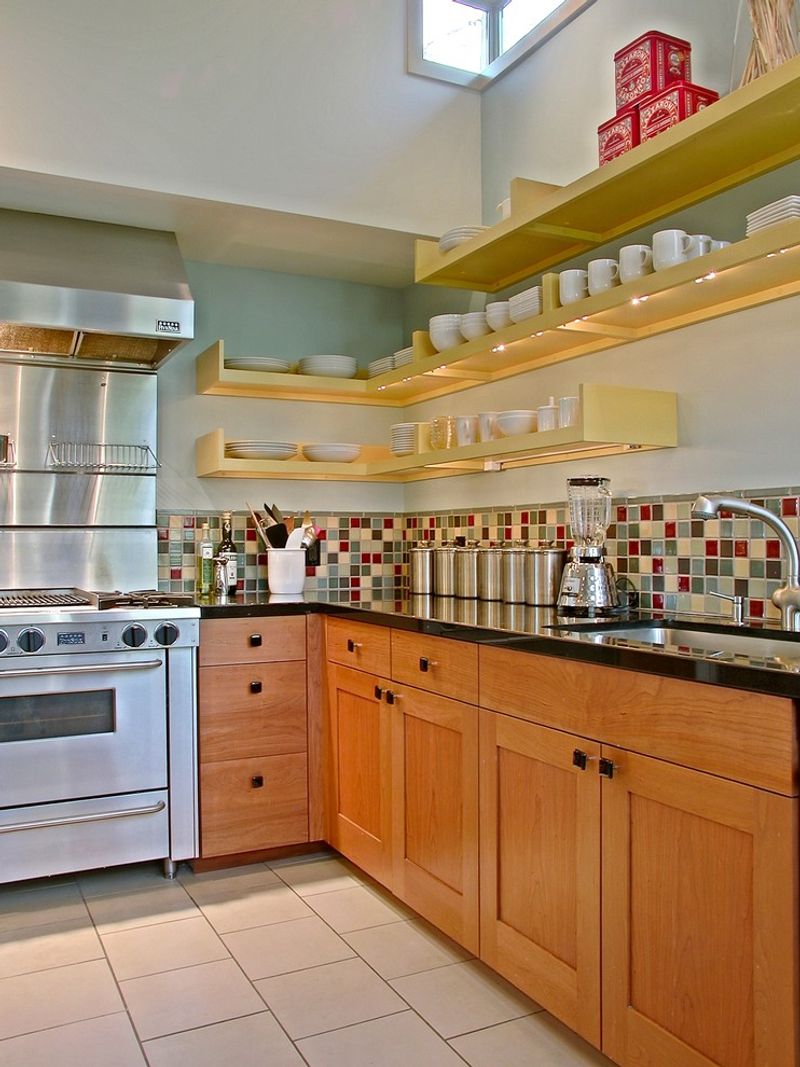
Those busy 1-inch mosaic tile backsplashes that were everywhere in the 2000s now scream “dated renovation” in NYC kitchens. The countless grout lines collect cooking grease and grime, turning what was once a design feature into a cleaning nightmare for busy New Yorkers.
Visual clutter is another major issue these tiny tiles create a busy background that competes with other kitchen elements. In compact city kitchens, this visual noise makes spaces feel even smaller and more chaotic.
Maintenance becomes particularly problematic near cooking areas where splatters are inevitable. Discolored grout lines between tiny tiles are nearly impossible to restore without professional help, leading to a perpetually dirty appearance no matter how much you clean. Manhattan designers now view these as immediate replacement candidates in any serious renovation.
8. Clunky Over-the-Range Microwaves (skip)
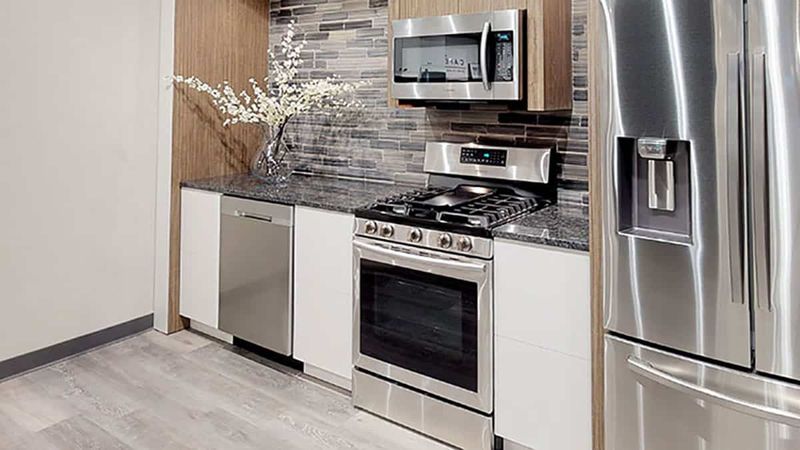
Massive over-the-range microwaves dominate visual space in small NYC kitchens while performing poorly at both cooking and ventilation. Their bulky profile creates a top-heavy appearance that overwhelms the stove area, making your kitchen feel smaller and more dated.
Ventilation performance suffers significantly compared to dedicated hood systems a crucial consideration in apartment buildings where proper cooking exhaust is essential. Most models recirculate air rather than actually venting outside, doing little to remove cooking odors from your apartment.
Height placement creates ergonomic issues too, with hot food at eye level posing a safety hazard. For Manhattan’s serious home cooks, these combination appliances represent the worst of both worlds: mediocre microwave performance paired with inadequate ventilation in a visually dominant package that dates your entire kitchen.
9. Heavy Window Valances (skip)
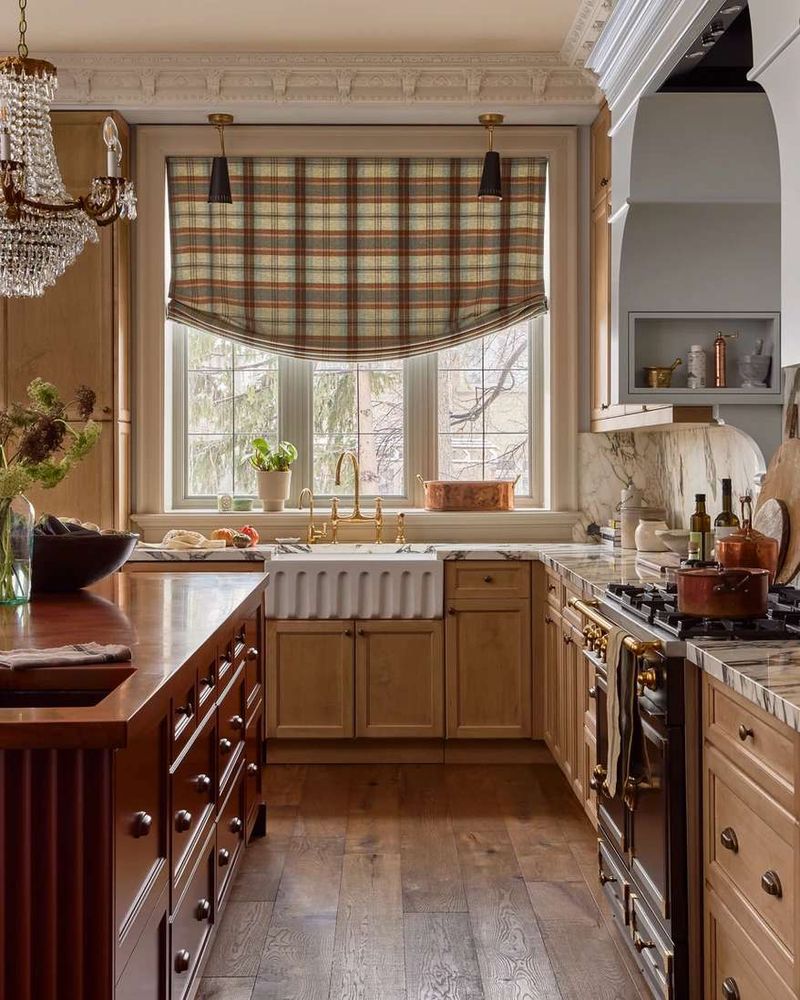
Fabric valances with swags, jabots, and heavy tassels belong in Victorian museums, not modern NYC kitchens. These dust-collecting window treatments block precious natural light in city apartments where sunshine is already limited by surrounding buildings.
Beyond light issues, these fussy window treatments trap cooking odors and grease, requiring frequent professional cleaning. The elaborate designs also clash with the clean, efficient aesthetic that defines contemporary urban kitchens.
Space perception matters tremendously in NYC, and heavy window treatments visually lower ceilings and crowd windows. This creates an oppressive feeling that contradicts the open, airy atmosphere most city dwellers crave. Window treatments should enhance natural light rather than obstruct it, especially in compact Manhattan kitchens where every design element must earn its place.
10. Tiled Countertops (skip)
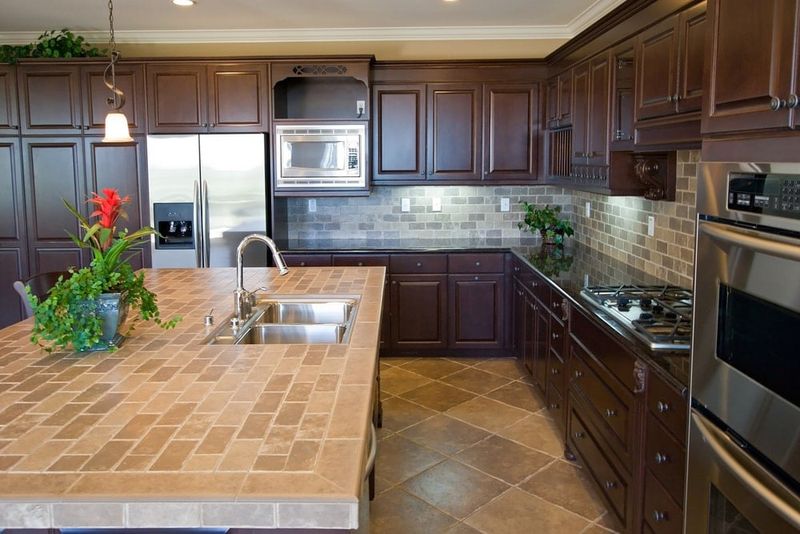
Tiled countertops create an uneven work surface that’s the enemy of every NYC home baker trying to roll out dough in limited space. Those grout lines become permanent dirt traps despite your best cleaning efforts, creating health concerns in food preparation areas.
Glasses and bottles wobble precariously on the uneven surface, a particular problem in compact city kitchens where counter space often doubles as serving or dining areas. The grout eventually stains and crumbles, requiring difficult repairs that disrupt your kitchen use.
Manhattan real estate professionals report that tiled countertops are among the first elements buyers plan to replace, often using them as negotiation leverage to reduce offers. The maintenance headaches and dated appearance make these a definite skip for any NYC renovation seeking longevity and practicality.
11. Ornate Corbels and Details (skip)
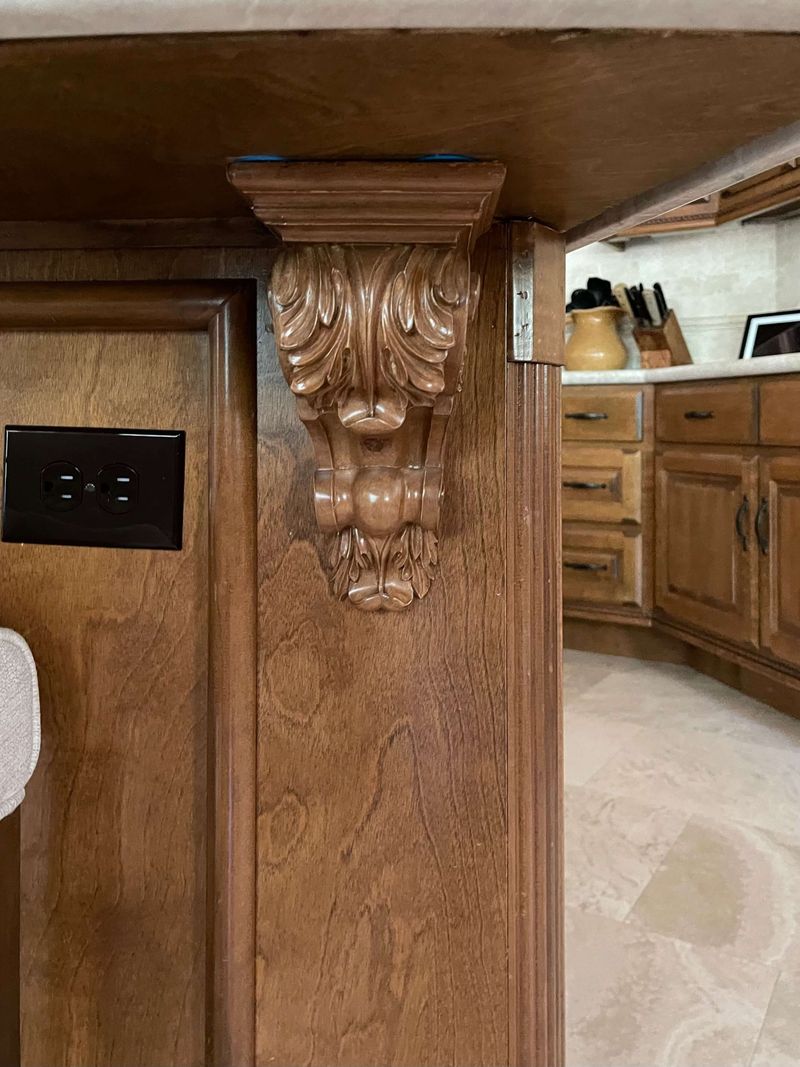
Elaborate corbels and ornamental moldings quickly collect dust and grease in NYC kitchens where space is already at a premium. These fussy architectural details demand cleaning attention that busy city dwellers simply don’t have time to provide.
The visual weight of these ornate elements makes small kitchens feel even more cramped and chaotic. In pre-war apartments with character architectural details elsewhere, these kitchen additions often feel forced and inauthentic.
Practical considerations matter too those decorative protrusions become obstacles in tight spaces, catching clothing and creating awkward traffic flow. Manhattan designers now favor clean lines that maximize both visual and physical space, allowing the quality of materials and thoughtful space planning to create interest without unnecessary ornamentation that dates quickly and complicates cleaning.
12. Bulkhead Cabinets Touching Ceiling (skip)
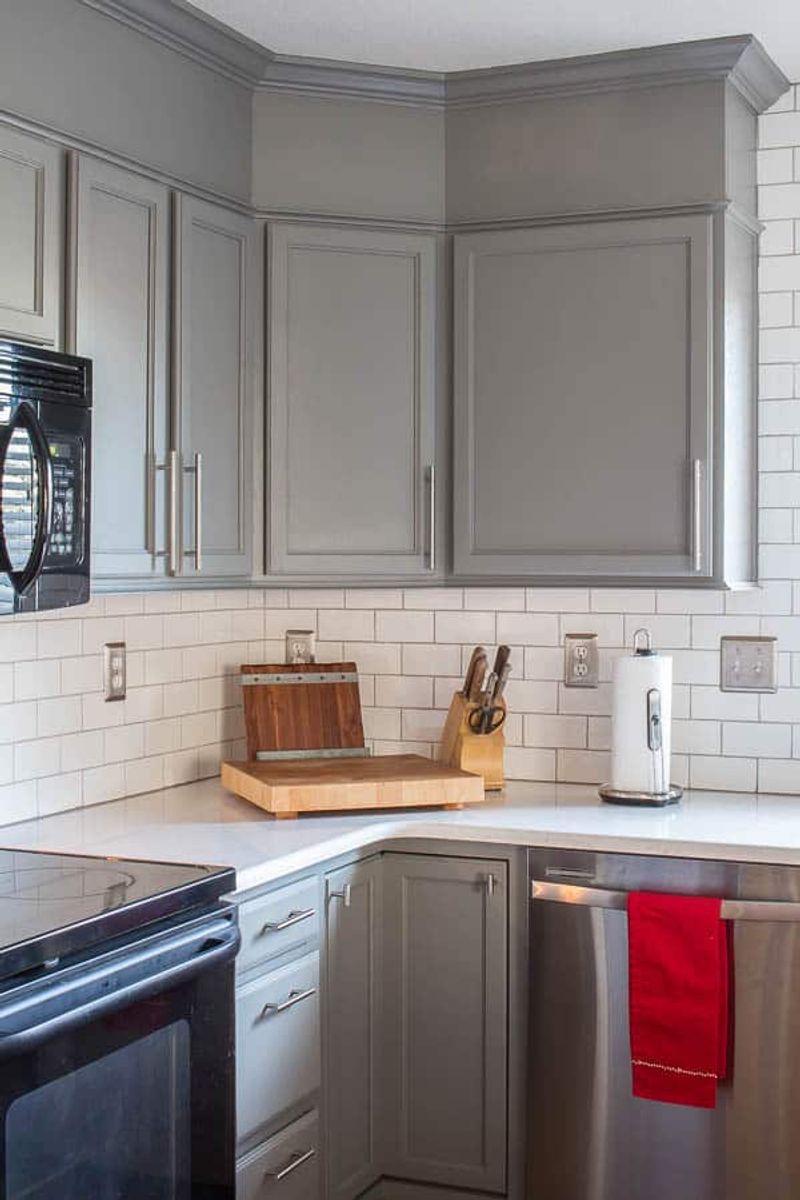
Those massive bulkhead cabinets that connect upper cabinets to the ceiling create a heavy, oppressive feeling in NYC kitchens. While theoretically providing extra storage, they’re often too high to access without a stepladder impractical in tight city apartments.
Visual weight is a significant issue as these hulking structures make ceilings feel lower and spaces smaller. The awkward proportions frequently result in cabinets that are too shallow for standard items yet still visually dominate the room.
Dust collection becomes a maintenance nightmare on these high surfaces that are rarely cleaned. Manhattan designers increasingly leave breathing room above cabinets instead, creating visual lightness that makes spaces feel larger and more contemporary. For actual storage needs, interior cabinet organizers provide more accessible solutions than these dated ceiling-touching behemoths.
13. Soft-Close Cabinetry (timeless)
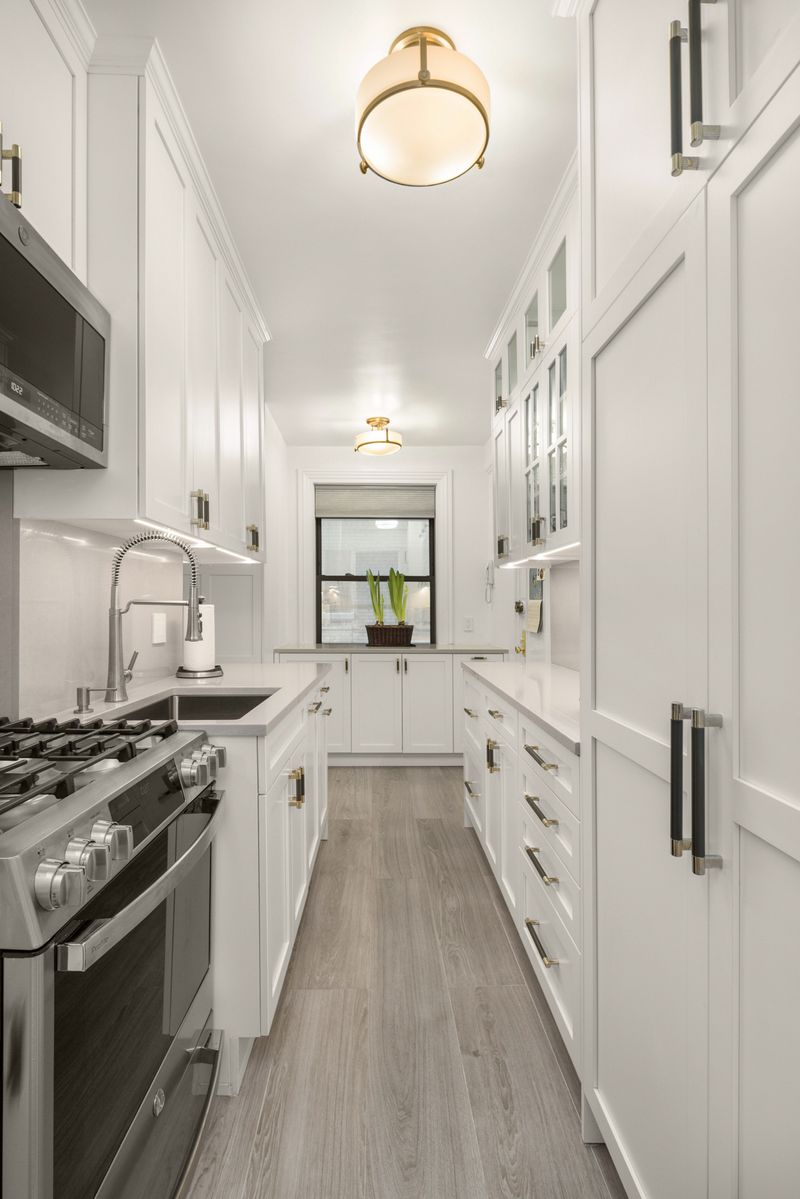
Soft-close mechanisms represent the perfect marriage of function and luxury in NYC kitchens where noise matters in close quarters. Cabinet doors and drawers gently ease shut instead of slamming a blessing for early risers trying not to wake roommates or family members.
Durability benefits extend beyond noise reduction the controlled closing motion prevents the wear and damage that occurs with traditional cabinets. This technology has become so refined that the mechanisms now last for decades without maintenance.
The subtle sophistication of this feature communicates quality craftsmanship to potential buyers without being visually obvious. Unlike trendy finishes or materials that date quickly, soft-close functionality remains perpetually desirable. Manhattan designers now consider this a standard inclusion rather than a luxury upgrade, reflecting its timeless appeal in urban kitchen design.
14. Subway Tile Backsplash (timeless)
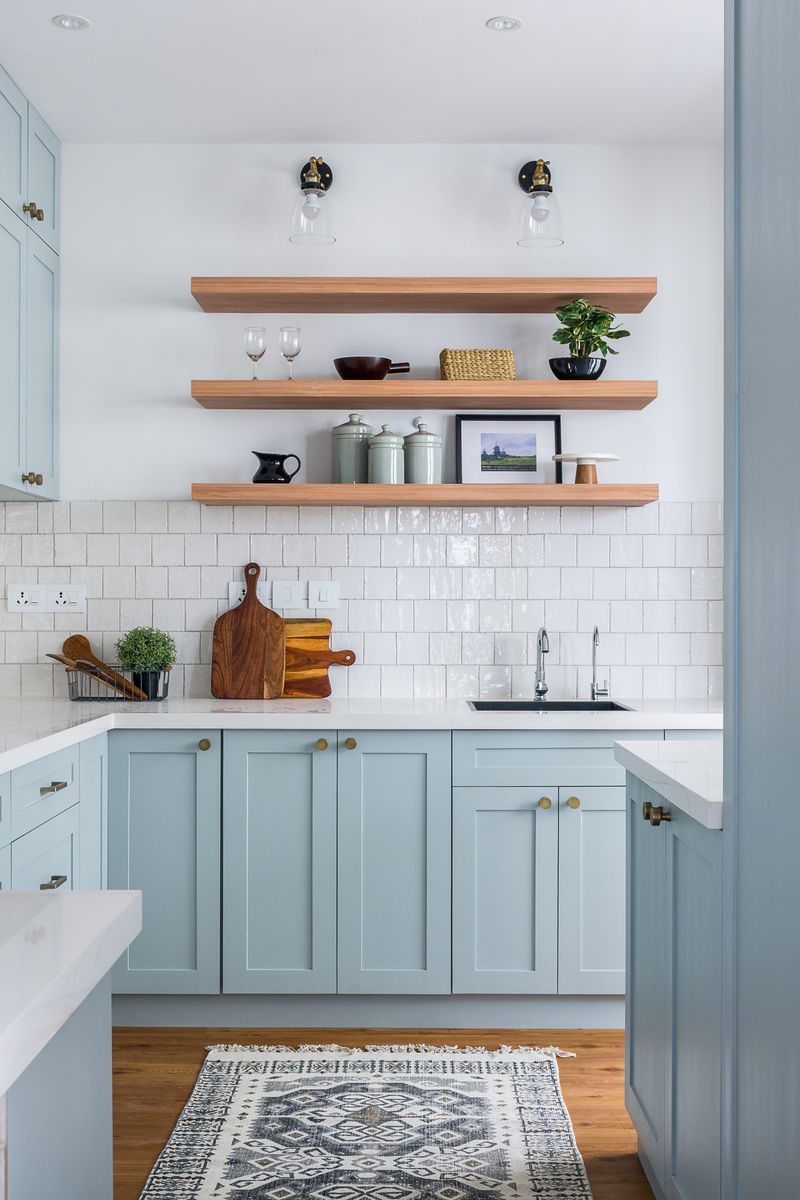
Classic subway tiles honor New York City’s architectural heritage while providing a clean, versatile backdrop that adapts to changing kitchen trends. Their rectangular simplicity offers visual interest without overwhelming small spaces perfect for typical NYC apartment kitchens.
Maintenance couldn’t be easier with these glazed ceramics that wipe clean with minimal effort. The simple grid pattern with minimal grout lines prevents the cleaning nightmares associated with more intricate tile designs.
Versatility is perhaps subway tile’s greatest strength it works equally well in pre-war brownstones and sleek modern condos. Small variations in color, finish, or installation pattern can completely transform the look while maintaining timeless appeal. For budget-conscious Manhattan renovators, these tiles offer remarkable value, providing high-end appearance without the premium price tag of more trendy options.
15. Under-Cabinet Lighting (timeless)
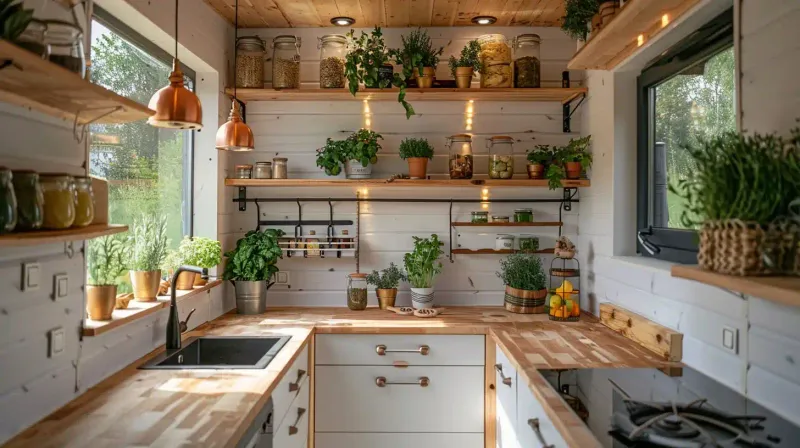
Strategic under-cabinet lighting transforms NYC kitchen functionality by eliminating shadows on work surfaces where you’re chopping vegetables or reading recipes. Modern LED strips provide this illumination while using minimal electricity important in a city with high utility costs.
The visual impact extends beyond practicality, creating a warm ambiance for everyday living and entertaining. This layered lighting approach makes small kitchens feel more expansive and sophisticated without requiring additional square footage.
Installation has become increasingly DIY-friendly with wireless options that don’t require complex electrical work perfect for renters or condo owners with strict renovation policies. The subtle glow highlights countertop materials and backsplashes, maximizing your investment in these design elements. Manhattan designers consistently identify this feature as offering exceptional return on investment in both daily enjoyment and resale appeal.
16. Neutral Quartz Countertops (timeless)
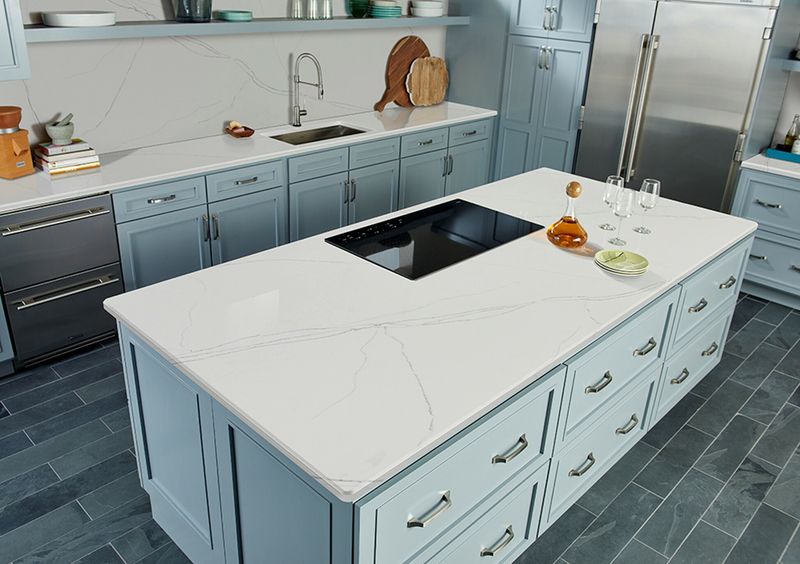
Engineered quartz in subtle whites, grays, or beiges provides the perfect balance of practicality and elegance for demanding NYC lifestyles. Unlike natural stone, these surfaces resist staining from wine, coffee, and cooking ingredients without requiring special cleaners or annual sealing.
Durability factors heavily in Manhattan renovations where materials must withstand decades of use. Quartz delivers with scratch resistance that maintains its appearance through years of meal prep and entertaining.
Design versatility allows these countertops to complement any cabinet style or backsplash you might choose in future updates. The consistent patterning without unpredictable veining creates a clean, contemporary look that never appears dated or trendy. For city dwellers balancing aesthetic desires with practical concerns, neutral quartz represents the ideal compromise that continues looking fresh through changing design trends.
17. Deep Undermount Sinks (timeless)
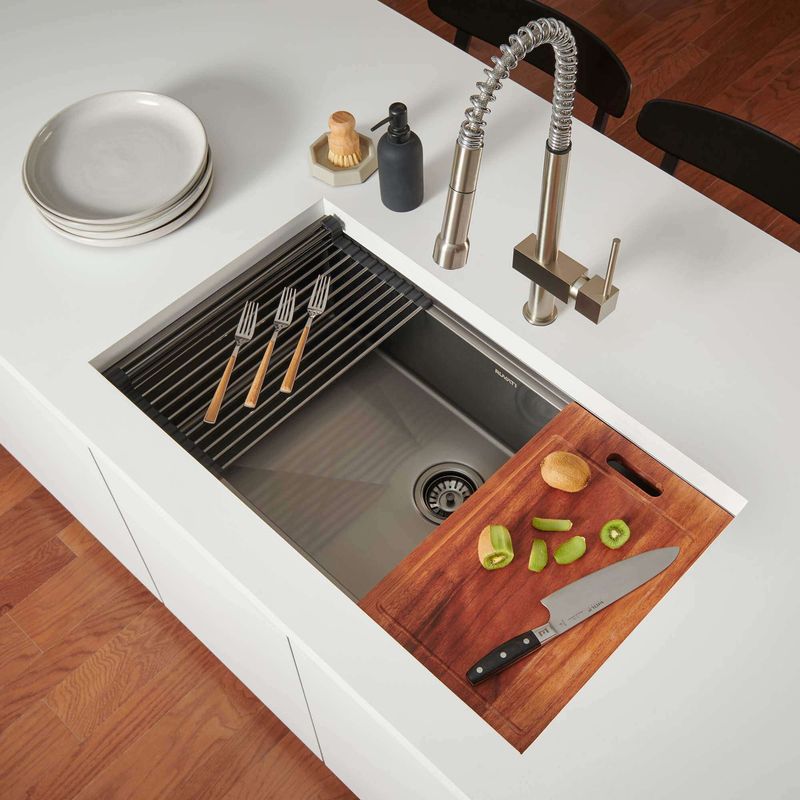
Deep undermount sinks have revolutionized NYC kitchen functionality by concealing dirty dishes during dinner parties in apartments where the kitchen is visible from dining areas. The seamless installation without a raised lip allows for easy countertop cleanup simply sweep crumbs directly into the sink.
Practical benefits abound for city dwellers the generous depth accommodates large pots and baking sheets that won’t fit in typical dishwashers. This makes hand-washing specialty items significantly easier in compact urban kitchens.
Material options have expanded beyond stainless steel to include composite materials in various colors that resist scratches and stains. The clean architectural look communicates quality and thoughtful design to potential buyers. Manhattan kitchen designers consistently recommend this feature for its perfect balance of form and function that transcends passing trends.
18. Simple Shaker-Style Cabinets (timeless)
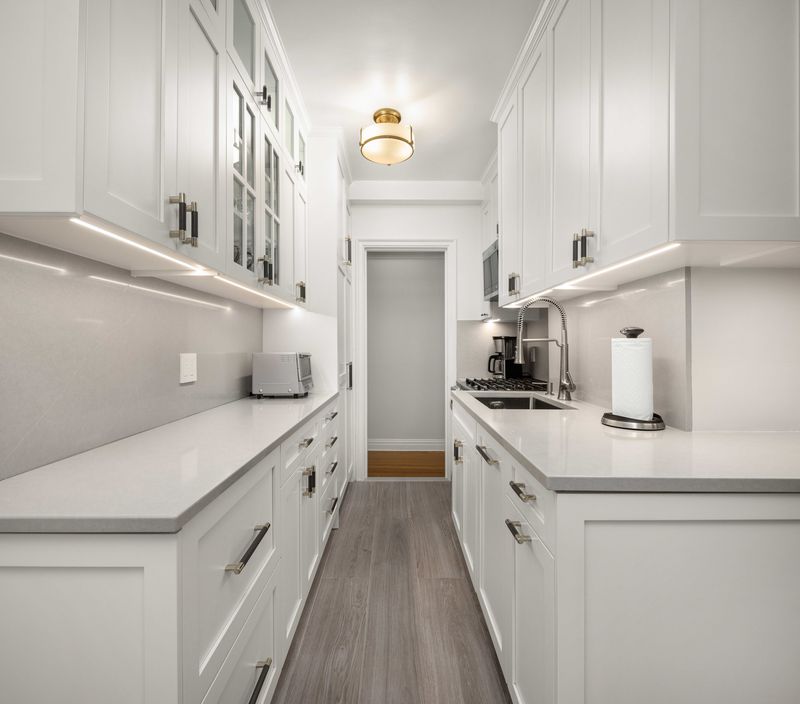
Shaker cabinets strike the perfect balance between character and simplicity with their clean recessed panels and minimal ornamentation. Their design versatility allows them to complement both historic brownstones and contemporary high-rise apartments throughout New York City.
Maintenance simplicity matters in busy urban households these flat surfaces without elaborate details collect less dust and wipe clean easily. The straightforward construction also tends to be more durable than ornate alternatives with delicate details that can chip or break.
Adaptability to changing trends occurs through simple hardware updates rather than complete replacements. A cabinet style that looked appropriate in the 1920s still feels fresh today the definition of timeless design. Manhattan designers favor these cabinets for their chameleon-like ability to take on different personalities through paint colors, hardware choices, and surrounding design elements.
19. Matte Black or Brushed Brass Fixtures (timeless)
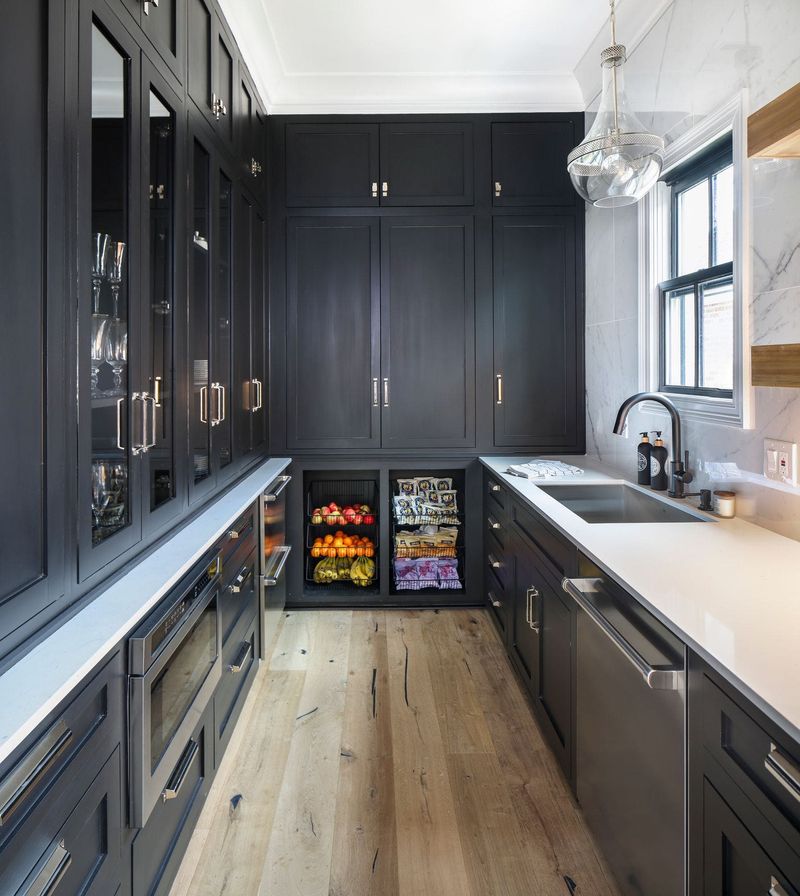
Matte black or brushed brass fixtures serve as jewelry for your NYC kitchen, adding personality without overwhelming the space. Unlike trendy finishes that quickly look dated, these options have proven their staying power through decades of design evolution.
Fingerprint resistance gives these finishes a practical advantage in busy urban kitchens. The subtle surface texture hides water spots and everyday smudges that would be glaringly obvious on chrome or polished nickel.
Versatility across design styles allows these fixtures to complement everything from industrial loft aesthetics to classic pre-war renovations. Their visual weight provides just enough contrast to create interest without dominating the space. Manhattan designers favor these finishes for their ability to add warmth and character while maintaining timeless appeal that won’t require replacement as other kitchen elements evolve.
20. Integrated Appliance Panels (timeless)
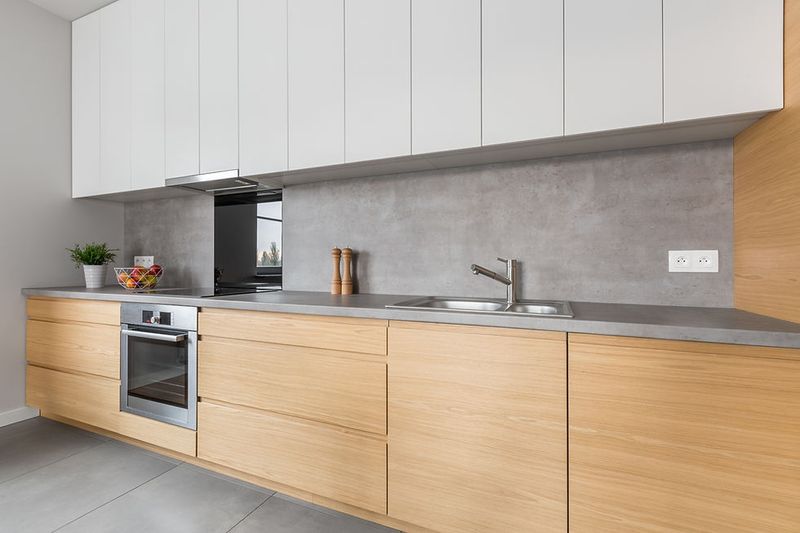
Disguising appliances behind cabinetry panels creates visual continuity that makes compact NYC kitchens feel larger and more cohesive. The seamless appearance elevates the entire space from utilitarian cooking area to architectural showpiece.
Noise reduction is an unexpected benefit these panel systems typically include additional insulation that quiets dishwasher and refrigerator sounds. This feature is particularly valuable in open-concept apartments where kitchen noise travels to living and sleeping areas.
Design longevity comes from focusing attention on beautiful cabinetry rather than appliances that visually date as technology evolves. When appliances eventually need replacement, the panels can often be adapted to new models, preserving your investment. Manhattan designers increasingly specify this feature for clients seeking sophisticated, uncluttered kitchens that prioritize architectural integrity over displaying brand names.
21. Open, Airy Layouts (timeless)
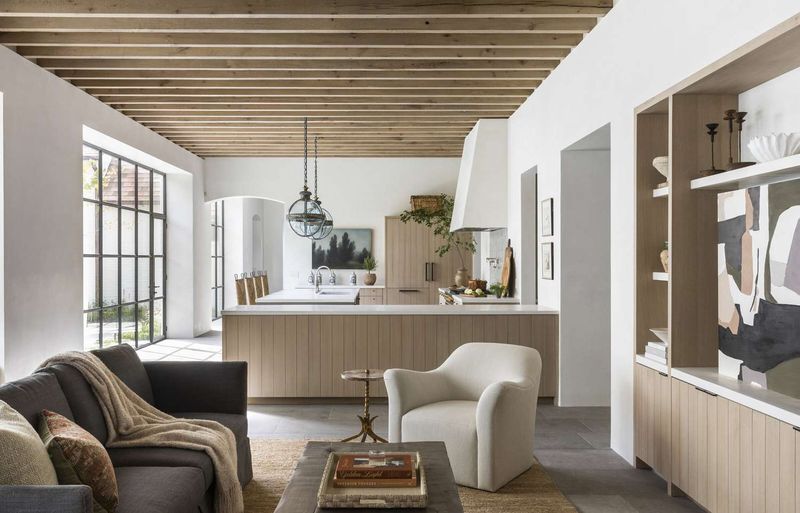
Strategic removal of non-structural walls transforms compartmentalized NYC apartments into flowing spaces that accommodate both cooking and socializing. This approach maximizes natural light penetration – precious in city buildings often shadowed by neighboring structures.
Sight lines between kitchen and living areas allow parents to monitor children while preparing meals. The improved circulation makes even modestly-sized apartments feel more generous and accommodating for entertaining.
Flexibility for changing needs represents perhaps the greatest advantage these adaptable spaces can be reconfigured as family situations evolve. Manhattan real estate professionals report that open layouts consistently command premium prices compared to traditionally segmented floor plans. The timeless appeal comes from prioritizing spatial quality over rigid room definitions, creating homes that feel contemporary regardless of changing design trends.
22. Warm Natural Wood Accents (timeless)
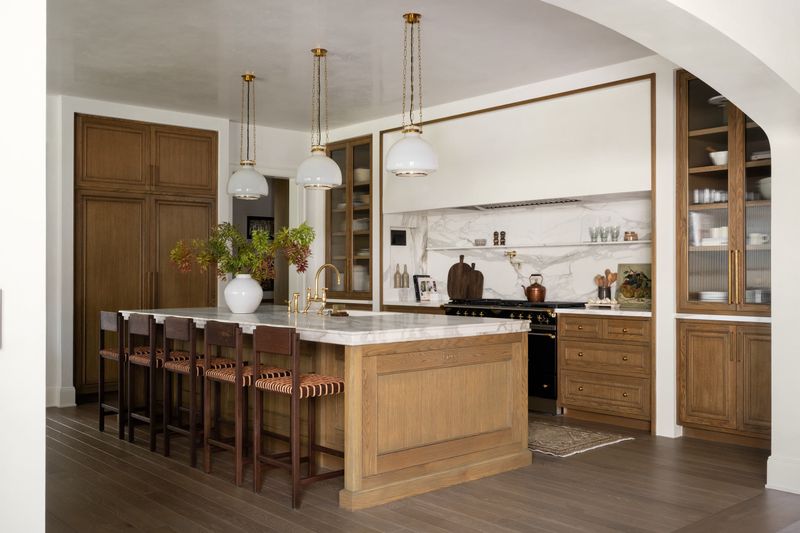
Incorporating natural wood elements through floating shelves, butcher block islands, or accent cabinets brings organic warmth to contemporary NYC kitchens. The tactile quality creates welcome contrast against the hard surfaces of stone, tile, and stainless steel that dominate modern kitchens.
Aging gracefully is a significant advantage quality wood develops character over time rather than simply wearing out. This patina tells the story of your home’s history in a way that manufactured materials cannot match.
Visual versatility allows wood to complement any design direction from industrial to minimalist to traditional. The natural variation in grain patterns adds subtle visual interest without overwhelming the space. Manhattan designers increasingly incorporate these elements as counterpoints to the sometimes sterile feeling of all-white kitchens, creating balanced compositions that feel both fresh and timeless.

